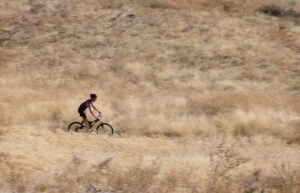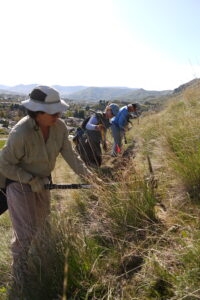National land trust group meeting here to learn about community conservation efforts Nov. 7-8
The collaborative community building being fostered by conservation organizations like the Chelan-Douglas Land Trust, the Methow Conservancy and similar organizations is getting national attention. The national Land Trust Alliance and the Washington Association of Land Trusts have chosen to hold a Community Conservation Conference in our valley on Monday and Tuesday, Nov. 7-8 at Pybus Public Market.
One of the things I appreciate about our local land trusts is that they view their role as much more than just conserving land. Instead, the leaders and board members see the need to help the entire community thrive.
They’re starting with the question: What best serves the community and make sure that diverse local voices are heard. Those conversations start with common points of agreement. Bugert quoted Ronald Reagan’s line that “someone who agrees with me 80 percent of the time is a friend and ally, not a 20 percent traitor.” Community conservation focuses on building community, not creating enemies.
This grass roots community approach has been standard operating procedure for the land trusts in our region. Here are a couple of good examples: The Land Trust and the Trust for Public Land sponsored the Wenatchee Foothills Community Strategy that brought together a broad coalition of interest groups to develop a plan for the hills west of town. That brought together the Wenatchee Sportsmen’s Association, the Native Plant Society, plus homebuilders, real estate professionals and others. They developed a collaborative plan that was ultimately funded in large part by community members to the tune of $8.6 million.
The same approach has been used in the nearly completed Upper Wenatchee Community Lands Plan that will propose ways to address 38,000 acres of timberland that is slated for sale by Weyerhaeuser. When you bring the whole community together to find creative ways to plan, you have an opportunity address big-picture issues like reducing wildfire risks, developing logging operations, preserving critical wildlife habitat and creating opportunities for recreation.
That is the essence of community-based conservation. It all starts with listening and learning. “It’s grass roots planning at its finest,” Bugert told me.
One of the speakers at the conference will be Rob Aldrich, who wrote a fascinating article on the subject in the Spring 2016 Issue of Saving Land magazine. Here are a few of his thoughts on what community conservation is:
It begins with the sense of responding to community needs, connecting people with the place they live, creating opportunities for people to get involved, providing public access and making lasting and meaningful impact in the lives of people.
What I appreciate most about this concept is that brings us together to meet community challenges and starts with the sense of shared interests or common ground.




